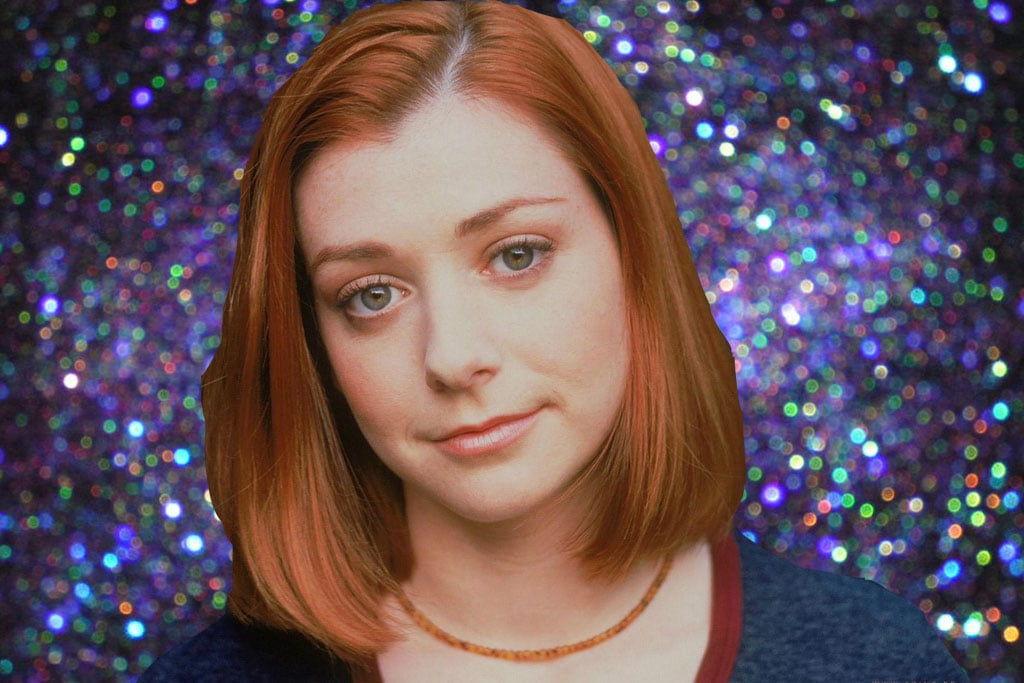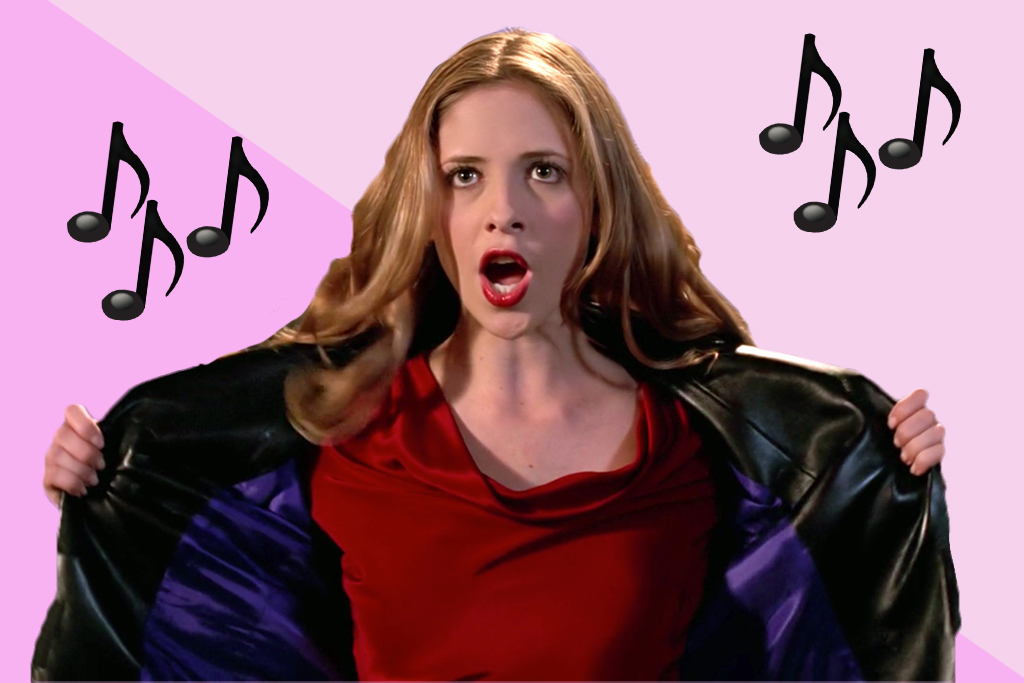A Love Letter To Willow, Buffy The Vampire Slayer’s Most Compelling And Kickass Character
Willow was so much more than the teen drama sidekick.

When Buffy The Vampire Slayer premiered 20 years ago it became a pop culture staple. Teen shows generally don’t get much respect, and often neither do a lot of horror/fantasy/sci-fi television. But this lack of critical attention also allowed Buffy to take risks and be subversive. It changed expectations of the genre and also how young women are represented on screen.
As a series about a female teenage vampire hunter, Buffy could so easily have been dismissed. Instead, it became so highly regarded that its initial devoted cult following developed into the legitimate academic subject of Buffy Studies (with its own journal to boot).
Although Buffy Summers often receives the bulk of the fanfare for being a sharp, kick-ass hero I’d actually argue that all along, Willow was really the most complex and compelling character on the show. (The awkward teen becomes the most powerful witch in the world — how’s that for character growth?) Willow’s identity as an autonomous witch exemplifies power — a power that is earned and much-deserved.

Willow Flipped Teenage Tropes
When we meet Willow age 16, she is unashamedly smart but also timid and lacking confidence — something that is perpetuated by her position as a nerd in the high school hierarchy. This stereotype is nothing new, but the show used it in clever ways; Buffy often explored tropes like the rich bitch (Cordelia) and the dumb jock (any number of the teen vampires).
Think of the opening scene of the series: the familiar scenario of a couple sneaking off to have sex. The tension, heightened by an off-screen noise, is just a foil for when the apparently scared girl transforms and bites her seemingly predatory companion. These sorts of narrative subversions allow for significant character development, especially with Willow.
In taking on the job of fighting evil, Willow’s genius-level smarts regularly save the day and/or world. Buffy is impressive for her intuition, but her unexpected and improvisational slaying style often relies on leg-work done by the gang. Willow’s research often finds the exact thing needed to kill whatever they are up against, but she doesn’t just hide out in the library. Her success boosts her self-assurance, and the way that Willow comes to really own her intelligence is so great.
This is where Willow stands out. Buffy came into her role as the slayer as a popular cheerleader — she had plenty of confidence before she was gifted with extraordinary powers. Buffy is pretty much always certain of her choices; it’s part of why she survives so long in what is usually a pretty short-lived occupation. Willow has to work to develop this sort of self-assurance, to believe in her decisions. This is impressive and also probably familiar to plenty of viewers.
Unlike Buffy, Willow is also an example of a truly good friend. She might start off seeming like a bit of a doormat, because she is so easy-going and agreeable. In the very first episode, Willow readily agrees to tutor Buffy, despite Buffy standing by and doing nothing as Cordelia bullied Willow only one scene earlier.
But Willow is deeply loyal. That she takes on the task of staking vamps is pretty strong evidence of how far she’ll go for her friends. Willow is not the usual teen BFF; someone who goes shopping and nods and smiles and lets her friends get away with shit. Think of Lane Kim in Gilmore Girls, who always played second fiddle to her self-centred best friend Rory. She’s strong and independent in her own right.
Willow is emotionally supportive too — especially when it comes to putting up with Buffy, who can be incredibly annoying. Buffy is that friend who dates someone who is a terrible choice, and constantly talks about it. Her on-again-off-again boyfriend is Angel, who takes the whole bad boy thing to another level because he’s a vampire. Willow is there for Buffy, trashing him when he breaks up with her and, more impressively, returning his lost soul so Buffy doesn’t have to kill him, in what is her first serious spell.
Witchcraft and Power
That Willow is a witch is a pretty big reason why I love her. In Buffy, witchcraft is about discovering and harnessing your innate power (life lesson!). There is a definite progression in the way that Willow practices witchcraft — she learns from books, absorbing written knowledge, but also taps into something deeper and more intuitive. This ties in to the way that she settled into herself in college, allowing her to access this power.
Willow’s growing confidence in her witchcraft mirrors that in her everyday life, and she becomes more assertive and more sure of herself. Witchcraft is all about power. For Willow, it is obviously a way to contribute more to the ongoing fight against evil, but it also allows her to take care of herself and her friends. Willow’s search for autonomy is familiar in teen life, and reflects a yearning for control.

The way that Willow is represented as a witch is different to other examples from the time. The most obvious comparison is Sabrina The Teenage Witch, which premiered in 1996. This is witchcraft for a very different audience — Sabrina only had to deal with regular teenage things, like school, dating and changing her outfits by snapping her fingers. Her mistakes are generally humorous, made for family-friendly comedy. For an older audience, Charmed came out the year after Buffy, with the three sisters balancing fighting evil with dating and work.
Unlike these witches, Willow does not simply inherit her power genetically. She teaches herself magic. She is gifted, but this is something that she develops, making her progression compelling. What really pushes Willow to harness her power is her relationship with Tara. Willow develops her witchcraft with and through Tara, and her new magical discoveries mirrors her sexual experiences.
Willow and Queer Identity
After a brief period of adjustment — but importantly, without panic — Willow is unashamed about her queerness. This is a pretty decent representation of lesbians compared to other on TV at the time. Shows like Party of Five, Ally McBeal and Sex and The City had plot points about ‘experimentation’; but it was always a limited-time thing that seemed like a way to bump ratings. There were overt relationships elsewhere — Friends and Roseanne come to mind — but in many shows, like Xena, relied on subtext. Willow and Tara are openly a couple, they’re in the foreground of the show, and their relationship is not hidden.
When Willow comes out, her revelation is accepted and Tara is welcomed into the gang. Her relationship with Tara is not pointed to regularly as a thing, it just is.
However, where it is treated differently is in the representation of sex. While Buffy has increasingly steamy encounters with men (she and Spike destroyed an entire house in one particularly energetic scene), lesbian sex was drawn through veiled suggestions. Willow and Tara didn’t even get an on-screen kiss until season six, which Joss Whedon had to fight the network for.
Tara was also, unfortunately, an example of the persistent Bury Your Gays trope — another queer female denied a future to further the plot. Tara’s death is the catalyst for Willow’s power exploding. Her love and grief transform her in a way that is horribly familiar — she becomes a different person, vicious and implacable.
The death of her love drives her to transform into an almost world-ending Dark Willow. This is exemplified in the death of baddie Warren, who she hunts down and flays alive in a scene that is surprisingly gory, considering the regularity of violence in the show. The camera actually lingers on the body, and it’s not that often that we get to see a female character enact this kind of bloody vengeance. This act also displays Willow’s new decisiveness — she knows what she wants and pursues it ruthlessly. It sees her truly break from her formerly timid self, to realise her incredible potential. But it’s her friends that pull her back from the edge of destruction and, you know, destroying the world.
This reminds us, yet again, of the depth of the relationships in Buffy. It also shows us how central Willow is to the series. She starts as a trusty sidekick, with an occasional B story. But Willow evolves into a fully-fleshed character who drives the narrative, indispensable to the show and to us. Her transformation from timid nerd to powerful queer witch shows just how important it is to be yourself, and find your place in the world.
—
Kate is not that kind of doctor. She is a part-time academic who also writes on art and culture, and is currently working on a passion project about women in horror. She tweets at @final_fatale.

